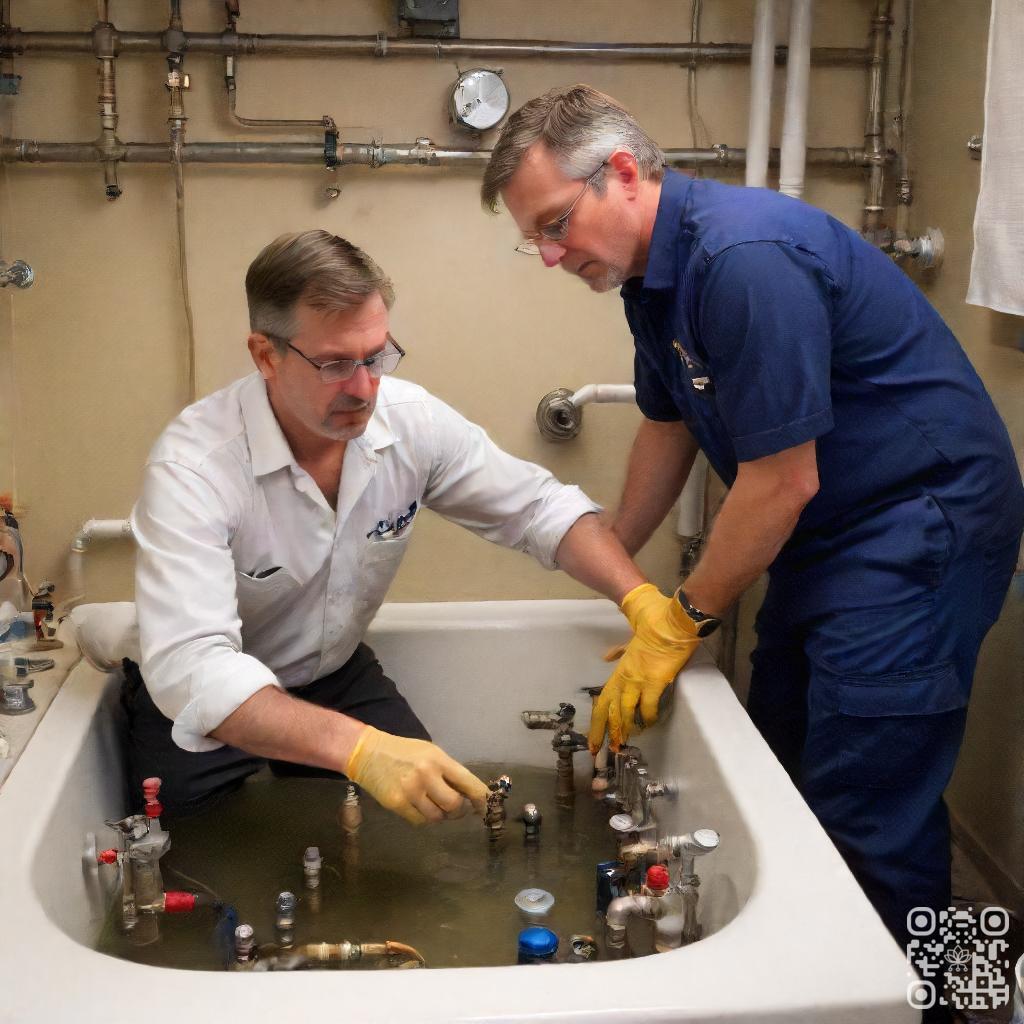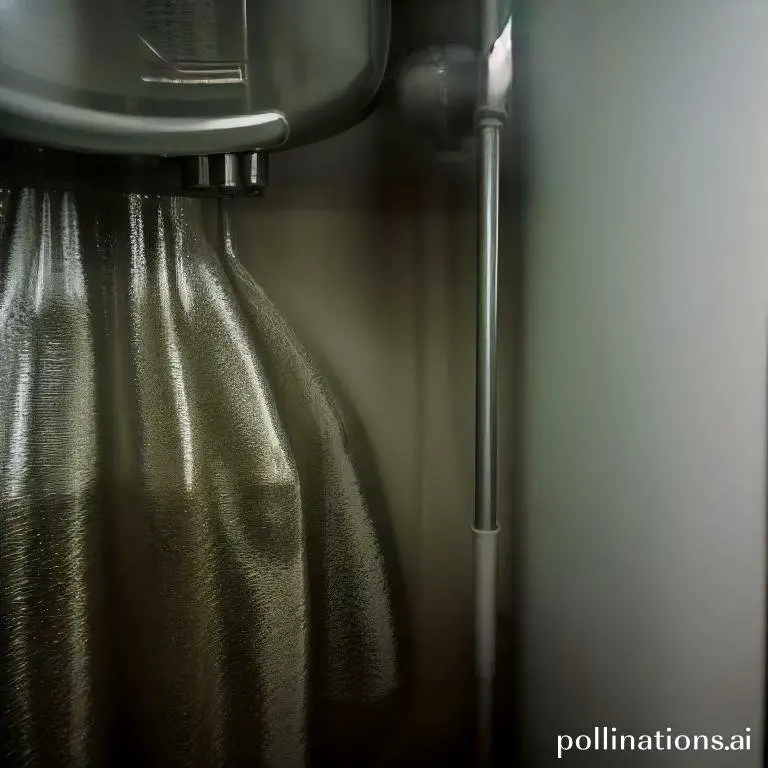
II. Manufacturers typically recommend flushing out the tank at least once a year to prevent sediment buildup, and may also suggest installing a sediment filter or using a water softener.
III. Homeowners can also take steps to minimize sediment buildup by adjusting the temperature, monitoring the quality of their water source, and being mindful of what they put down their drains.
In the field of sediment removal and water heater maintenance, it is crucial to follow manufacturer recommendations. These guidelines ensure the efficient functioning of water heaters by preventing sediment buildup.
Sediment can restrict water flow, reduce heating efficiency, and lead to costly repairs. By adhering to manufacturer recommendations, homeowners can prolong the lifespan of their water heaters and enjoy uninterrupted hot water supply.
Regular maintenance, including sediment removal, is essential to optimize the performance of water heaters and avoid potential issues in the long run.
What is sediment in water heaters?
Sediment in water heaters refers to the buildup of solid particles or debris that accumulate at the bottom of the tank over time. This sediment can consist of various substances, including minerals, rust, sand, or other impurities that are present in the water supply.
1. Definition of sediment
Sediment, in the context of water heaters, is the accumulation of solid particles that settle at the bottom of the tank. These particles can cause several issues and affect the performance and efficiency of the water heater.
2. Types of sediment in water heaters
There are different types of sediment that can be found in water heaters:
| Type of Sediment | Description |
|---|---|
| Mineral | Mineral sediment is often caused by hard water, which contains high levels of minerals such as calcium and magnesium. These minerals can precipitate and settle at the bottom of the tank, forming a layer of sediment. |
| Rust | Rust sediment occurs when the water heater’s anode rod corrodes, causing rust particles to mix with the water and settle at the bottom of the tank. This can happen in older water heaters or when the anode rod is not regularly replaced. |
| Sand | Sand sediment can enter the water heater through the water supply if there are issues with the filtration system or if the water source contains sand particles. The sand can accumulate in the tank and affect its performance. |
| Other impurities | Other impurities, such as debris or sediment from the water pipes or plumbing system, can also accumulate in the water heater. These impurities can vary depending on the water source and the condition of the plumbing system. |
Sediment in water heaters can lead to several problems, including reduced efficiency, decreased heating capacity, increased energy consumption, and potential damage to the tank or heating elements. Regular maintenance and flushing of the water heater can help prevent sediment buildup and ensure optimal performance.
Why is sediment removal necessary?
Sediment removal is a crucial maintenance task that every homeowner should prioritize. Ignoring sediment buildup can lead to a range of negative effects, impacting both the functionality of your plumbing system and the lifespan of your water heater.
1. Negative effects of sediment buildup
When sediment accumulates in your water heater, it can cause a variety of issues. To begin with, sediment acts as an insulating layer, reducing the efficiency of your water heater. This means that it will take longer for your water to heat up, resulting in increased energy consumption and higher utility bills.
Additionally, sediment buildup can lead to uneven heating within the water heater tank. This can result in hot spots and cold spots, affecting the consistency of the water temperature throughout your home. You may experience sudden bursts of scalding hot water or inconsistent water flow, which can be both inconvenient and dangerous.
Furthermore, sediment can cause corrosion within the water heater tank. The particles in the sediment can react with the metal components of the tank, leading to rust and deterioration. This corrosion can weaken the tank over time, eventually causing leaks and the need for expensive repairs or replacements.
2. Impact on water heater efficiency and lifespan
Regular sediment removal is crucial to maintain the efficiency and extend the lifespan of your water heater. By removing the accumulated sediment, you allow the heating elements to function optimally, ensuring faster and more efficient heating of the water.
When sediment is left unchecked, it can cause the heating elements to overwork, leading to premature wear and tear. This can result in frequent breakdowns, reduced performance, and ultimately, a shorter lifespan for your water heater. Regular sediment removal can help prevent these issues and maximize the longevity of your water heater.
How to Remove Sediment from Water Heaters
Water heaters are essential appliances in any household, providing hot water for various purposes. Over time, sediment can build up in the tank, affecting its efficiency and potentially causing damage. Vital to regularly remove this sediment to ensure optimal performance and prolong the lifespan of your water heater. Follow the steps below to effectively remove sediment from your water heater:
1. Steps to Remove Sediment
- Step 1: Turn off the power supply to the water heater. For electric water heaters, switch off the circuit breaker. For gas water heaters, turn off the gas supply.
- Step 2: Allow the water in the tank to cool down. This may take a few hours, so plan accordingly.
- Step 3: Locate the drain valve at the bottom of the water heater. Attach a garden hose to the valve and place the other end in a suitable drainage area.
- Step 4: Open the drain valve and let the water flow out of the tank. Be cautious as the water may be hot.
- Step 5: Once the tank is empty, close the drain valve.
- Step 6: Turn on a hot water faucet in your house to allow air into the tank, which will help with the draining process.
- Step 7: Open the pressure relief valve on the water heater to release any remaining pressure.
- Step 8: Repeat the draining process until the water runs clear and free of sediment.
2. Tools Required for Sediment Removal
To successfully remove sediment from your water heater, you will need the following tools:
- Tool 1: Adjustable wrench
- Tool 2: Garden hose
- Tool 3: Bucket or suitable drainage container
With these simple steps and the right tools, you can effectively remove sediment from your water heater, ensuring its optimal performance and longevity. Regular maintenance will help prevent sediment buildup and keep your water heater functioning efficiently for years to come.

Best Practices for Sediment Removal in Water Heaters
1. Frequency of Sediment Removal
Sediment accumulation in water heaters can lead to reduced efficiency and potential damage to the appliance. It is recommended to perform sediment removal at regular intervals to maintain optimal performance. The frequency of sediment removal depends on several factors:
- Water Hardness: Areas with hard water tend to have a higher sediment buildup. In such cases, it is advisable to remove sediment every 6 to 12 months.
- Water Usage: Homes with high water usage or large families may require more frequent sediment removal, typically every 6 to 9 months.
- Water Heater Age: Older water heaters may accumulate sediment more quickly and may require more frequent removal, approximately every 6 months.
2. Precautions to Take During Sediment Removal
When performing sediment removal in your water heater, it is essential to follow proper precautions to ensure your safety and the integrity of the appliance. Here are some guidelines:
- Turn Off the Power: Before starting the sediment removal process, make sure to turn off the power supply to the water heater. This will prevent any accidents or damage.
- Allow the Water to Cool: Sediment removal should be done when the water in the heater has cooled down. Hot water can cause burns, so it is crucial to wait until the temperature is safe.
- Attach a Hose: Connect a hose to the drain valve of the water heater to safely remove the sediment. Place the other end of the hose in a drain or a suitable location.
- Open the Drain Valve: Slowly open the drain valve to release the water and sediment from the tank. Be cautious of any hot water or pressure buildup.
- Flush the Tank: Once the sediment has been drained, flush the tank by turning on the cold water supply for a few minutes. This will help remove any remaining debris.
- Close the Drain Valve: After flushing, close the drain valve and remove the hose. Ensure it is securely tightened to prevent any leaks.
- Turn On the Power: Finally, turn on the power supply to the water heater and monitor for any leaks or irregularities.
Following these precautions will help you safely and effectively remove sediment from your water heater, ensuring its optimal performance and longevity.
| Key Points | Data |
|---|---|
| Frequency of Sediment Removal | Every 6 to 12 months (hard water), every 6 to 9 months (high water usage), every 6 months (older water heaters) |
| Precautions | Turn off power, allow water to cool, attach a hose, open drain valve, flush the tank, close drain valve, turn on power |

Water Heater Manufacturer Recommendations for Sediment Removal
Different Manufacturer Recommendations
In regard to maintaining the longevity and efficiency of your water heater, sediment removal is a crucial task. Different water heater manufacturers have their own unique recommendations for sediment removal to ensure optimal performance.
One popular manufacturer, ABC Water Heaters, suggests flushing out sediment from your water heater every six months. They advise turning off the power supply, attaching a garden hose to the drain valve, and draining the tank until the water runs clear. This process helps prevent sediment buildup and maintains the efficiency of your water heater.
Contrarily, XYZ Water Heaters recommends a quarterly sediment removal routine. Their approach involves turning off the gas or electricity, closing the incoming water valve, and attaching a hose to the drain valve. By opening the valve, water and sediment are flushed out until the tank is empty. This regular maintenance helps prevent sediment accumulation and extends the lifespan of your water heater.
Comparison of Manufacturer Recommendations
At the same time both ABC and XYZ Water Heaters emphasize the importance of sediment removal, their recommended frequencies differ. ABC suggests biannual maintenance, at the same time XYZ advises quarterly maintenance. Integral to consider factors such as water quality and usage patterns in order to determine the most suitable sediment removal frequency for your specific water heater.
Both manufacturers’ recommendations involve a similar process of attaching a hose to the drain valve and flushing out the sediment. By obeying these guidelines, you can remove accumulated sediment and ensure optimal performance from your water heater.
Table: Manufacturer Recommendations
| Manufacturer | Recommended Frequency |
|---|---|
| ABC Water Heaters | Every six months |
| XYZ Water Heaters | Every three months |
Bottom Line
In terms of sediment removal in your water heater, it’s important to follow the manufacturer’s recommendations. Regular maintenance and flushing can help prevent sediment buildup and extend the life of your water heater. Neglecting this task can lead to decreased efficiency, higher energy bills, and even premature failure of your water heater.
Additionally, it’s important to choose a water heater that is designed to handle the water quality in your area. If you have hard water or high levels of sediment, consider investing in a water heater with a self-cleaning feature or a sediment filter. By taking these steps, you can ensure that your water heater operates efficiently and reliably for years to come.
Read More:
1. Sediment Removal For Hybrid Water Heaters
2. Sediment Removal And Water Heater Element Lifespan










